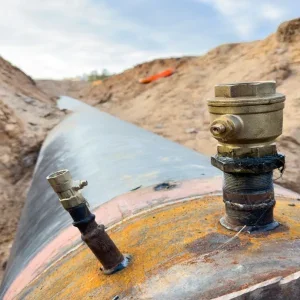
Australia could be set for the “fastest energy transition in the world”, according to an industry analyst.
The nation, which is the third-largest exporter of fossil fuels, is looking to ramp up its investment in renewables despite recent challenges presented by bushfires and a halt in construction activities due to the coronavirus pandemic.
Despite Australia being home to four of the world’s 10 biggest coal mines, Australian Energy Market Operator (AEMO) put forward a plan in July for the country to generate 94% of its power from renewable sources by 2040, as part of its commitment to reducing emissions in line with the energy transition.
According to data and analytics firm GlobalData, the nation’s declining cost of distributed energy resources, variable energy, and the willingness to provide cheap electricity to its consumers will help attempts to attain its ambitious target.
Australia has a ‘strong renewable pipeline’, says analyst
Somik Das, senior power analyst at GlobalData, said Australia is set to see the “fastest energy transition in the world”, due to its “sizeable renewable projects pipeline” totalling 102 gigawatts (GW), which comprises projects in nascent and advanced stages.
“Out of this, wind and solar PV represent almost 90% of the pipeline,” he added.
“The government has put the final nail in the coffin for coal-fired power plants, having no plans to continue coal and gas generators beyond the planned retirement dates.
“In fact, there is potential for coal and gas generators to retire earlier if renewables provide greater cost benefits before the 2040 horizon.”
Australia’s commitments to phasing out coal will no doubt be a big step in the efforts towards cleaning up the global economy.
The nation is currently the world’s biggest exporter of the mineral, having produced about 510 million tonnes (Mt) in 2017/18, of which about 75% was exported.
According to a report by public policy think tank the Australia Institute, it mines about 57 tonnes of CO2 potential per person annually, which is about 10 times the global average.
Solar PV will spearhead Australia’s installations in 2020
But, as part of the shift towards renewables, GlobalData predicts that solar PV will spearhead the nation’s power installations in 2020 followed by wind power.
It anticipates Solar PV will represent more than 25% of the total installations this year, slightly up on the 24% it amassed in 2019.
Das said the “steep reduction in module costs, improved efficiency, and low power purchase agreements” have placed solar PV next to wind as “green transformation flag bearers”.
He added: “The proposed energy transition would mean expansion in energy storage and investment towards building and improving the grid infrastructure to support the renewable expansion of this scale.”






